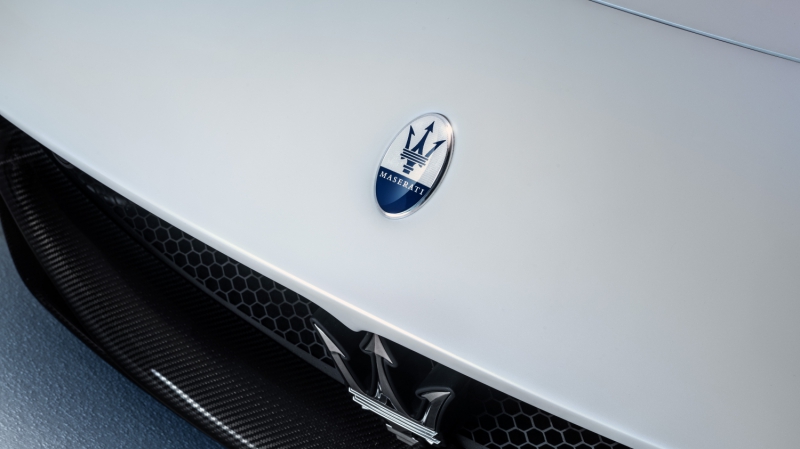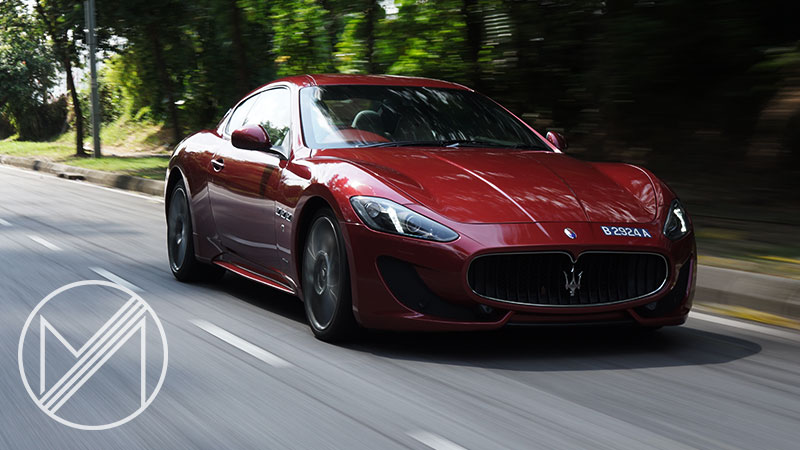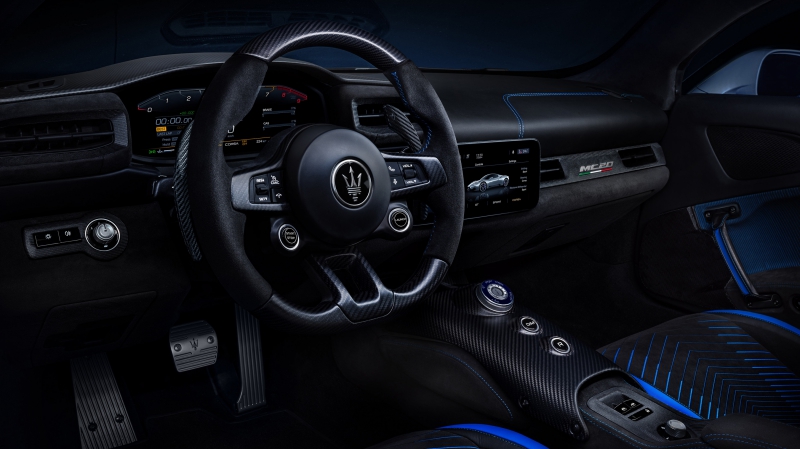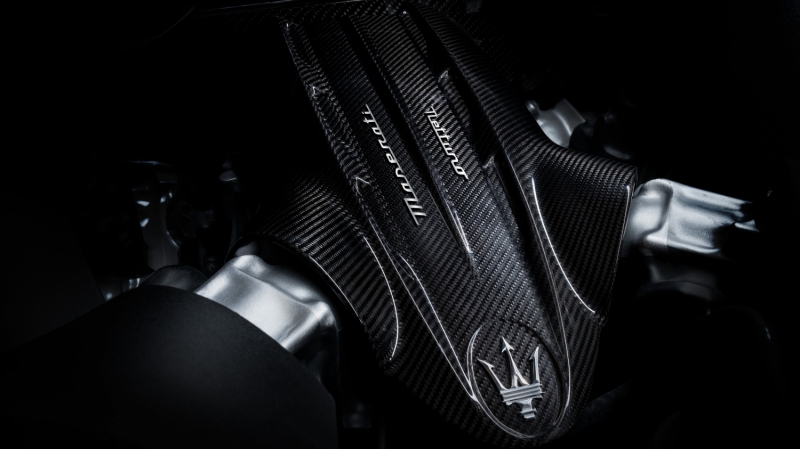What you are looking at is a new chapter in one of the most illustrious names in automotive history. Or so its makers would like us to believe. An all-new, carbon-fibre supercar armed with a Maserati-developed 463kW mid-engine twin-turbo V6, the Maserati MC20 is what its makers hope will bury its posh and plush past for a more visceral and rawer one. It sounds all-too promising, too much like déjà vu.
Lady Luck

If you look up the definition of “unlucky” you’ll find two entries, one of which is Violet Constance Jessop. Jessop, a maritime stewardess in the 1910s had a grand old time when the first ship she served on, the RMS Olympic, collided with a warship. A year later she joined its sister ship, the RMS Titanic on its 1912 maiden voyage. You don’t need to guess how that trip went down.
She survived the traumatic disaster only to later join the HMHS Britannic hospital ship in the First World War. Luck again caught up with her when the Britannic struck a mine and was sunk in less than an hour. She narrowly escaped death as her lifeboat was sucked into the Britannic’s propellers.
You can call Jessop unlucky, but she may merely be the luckiest person in history. She just needed to work on her timing. The same can be said about the second entry on that definition, Maserati. Though in Maserati’s case, it has had more highs to lows and back again than a bungee jumper.
History of Maserati’s owners

Back in the 1950s, Maserati wasn’t just a luxury carmaker. Maserati was the performance brand. The Trident carmaker was to racing fans and the aristocracy then what the Prancing Horse is to us today. Sadly, like many luxury and performance car makers of its era, it soon fell on hard times in the Sixties.

In 1968, Citroën, maker of some of the quirkiest cars, swooped in to buy Maserati. The purchase began one of the world’s first experiments in cross-brand powertrain and engineering sharing.

Since Italian and French build quality were on par, the relationship wasn’t as disastrous as it sounds. Citroën helped Maserati update its ageing product range, whilst Maserati’s engineers aided its owners with new engines. For a while, it worked and things were good.
Unfortunately for Maserati, the good times weren’t to last. With the 1973 oil crisis, a harsh recession followed, which led to Citroën’s bankruptcy and austerity measures enacted in Italy. This eventually led to Alejandro de Tomaso of…er…De Tomaso fame acquiring Maserati in 1975.

De Tomaso was instrumental in reshaping Maserati into the brand we know today. No longer was Maserati to be a maker of mid-engine luxury grand tourers. Instead, the company’s product line was refocused on fast sedans and luxurious front-engine grand tourers.
In 1993, the Argentinian industrialist eventually sold his stake in Maserati to FIAT. The Italian giant then shuffled Maserati off to once Grand Prix rival Ferrari four years later.
Maserati’s second renaissance moment

Thankfully, Ferrari made good use of Maserati by blunting the Trident’s pointy ends and polishing it instead. Ferrari turned Maserati into a more luxurious and more dignified “sub-brand” if you may so use the term liberally. Ferrari powertrains were repurposed to power the GranTurismo and Quattroporte. Whereas the Enzo was generously given to Maserati to be reborn in full Le Mans racer treatment in the MC12.
Once again, just when Maserati found its purpose in life, palm-rubbing Sergio Marchionne separated it from Ferrari and bundled it with Alfa Romeo where it languished in a state of uncertainty and half-arsery.
Maserati’s estranged decade

Marchionne’s rescue of Chrysler after the 2008 financial crisis further muddled Maserati products. The sixth-generation Quattroporte, third-generation Ghibli, and Levante SUV sported more flimsy plastic than the Pacific ocean. Sure, Maserati cars of old never felt like it was hewn from granite, but it never gave the impression of being a product of low-cost mass-manufacturing like the new trio.
Judging by the irregularity of product development between Maserati and Alfa Romeo, things were chaotic in the background. There is a sense that nobody could figure out what Maserati should be.
Was Maserati supposed to take on Porsche? Shouldn’t Ferrari look into that. Is it a Latinised Bentley? Or merely Italy’s answer to the Audi-BMW-Mercedes hegemony? Wait, isn’t that Alfa Romeo’s job? Who cares? Let’s break for afternoon siesta and reconvene never.
The quintessential Maserati

All this while the GranTurismo continued soldiering on for 12 years as the definitive carrier of the Trident. It is amazing how well Ferrari nailed the GranTurismo brief right from the get-go.
It not only embodied the company’s identity since the De Tomaso era, but the big coupe also amplified it. Everyone knew what a Maserati should be when they looked at the GranTurismo – a big and sonorous charmer like Pavarotti. No wonder it carried on for so long with so little changes.
An odd gestation

All this makes the new MC20 a bit of an odd duckling. From the new in-house engine to the Dallara-developed chassis, Maserati new hardcore performance focus is made clear. The cabin too is made to reflect that focus, with a bare race car interior that evokes memories of the Le Mans-styled MC12.

Upon closer inspection the MC20’s interior looks all too familiar. It certainly bears a resemblance to that of the Alfa Romeo 4C, except with lashings of Maserati’s blue hue to tick the corporate identity box. Dig further and you discover that Dallara and Maserati too were responsible for the 4C’s carbon-fibre chassis.
A report citing an unnamed executive claims that the MC20 project was repurposed from Alfa Romeo’s aborted 8C supercar. More damningly, the MC20’s engine bears some similarities to Ferrari’s F154 V8 engine and Alfa Romeo’s 690T V6. Then again, nobody will care if it comes from the right pedigree.

Maserati’s claims that the MC20 represents a new and more independent era seems a little tenuous. How much of the MC20’s development was intentional from the start? If the MC20 is to serve as Maserati’s new North Star, what will future products be like?
Hitting the mark or missing the point?

We currently live in an era where performance cars operate at such a high level that it has become meaningless to most car buyers. Even our hatchbacks can deliver unbelievable, near unusable, performance numbers. So much so, that many are now looking towards pure aesthetics than raw dynamics.
Jeremy Clarkson can declare his undying love for the Alfa Romeo 4C and rubbish the Bentley Continental GT. But the results speak for itself. His ramblings did jack all to save the 4C from being a flop or stop Bentley’s runaway success.

The GranTurismo owes its longevity to having the right aesthetics despite its rickety underpinnings. Where else are you going to find a grand tourer that sang like an operatic tenor and look like a diva? It attracted customers that preferred suits tailored by Ermenegildo Zegna not branded by Scuderia.
The MC20 will no doubt deliver on its amazing sub-3sec 0-100km/h claim, but will anyone bother with a car of such an uncompromising performance focus? Not in an era when other supercar makers can deliver cars of similar performance with far better aesthetic qualities.

Make no mistake, Maserati is one lucky cat to find itself landing on its feet again. Just as it did in 1968, 1975, 1993, and 1997. Whether the MC20 will be the genesis of a brave new era is another question. Because luck and misfortune are often the same sides of the coin, only at different moments in time.

